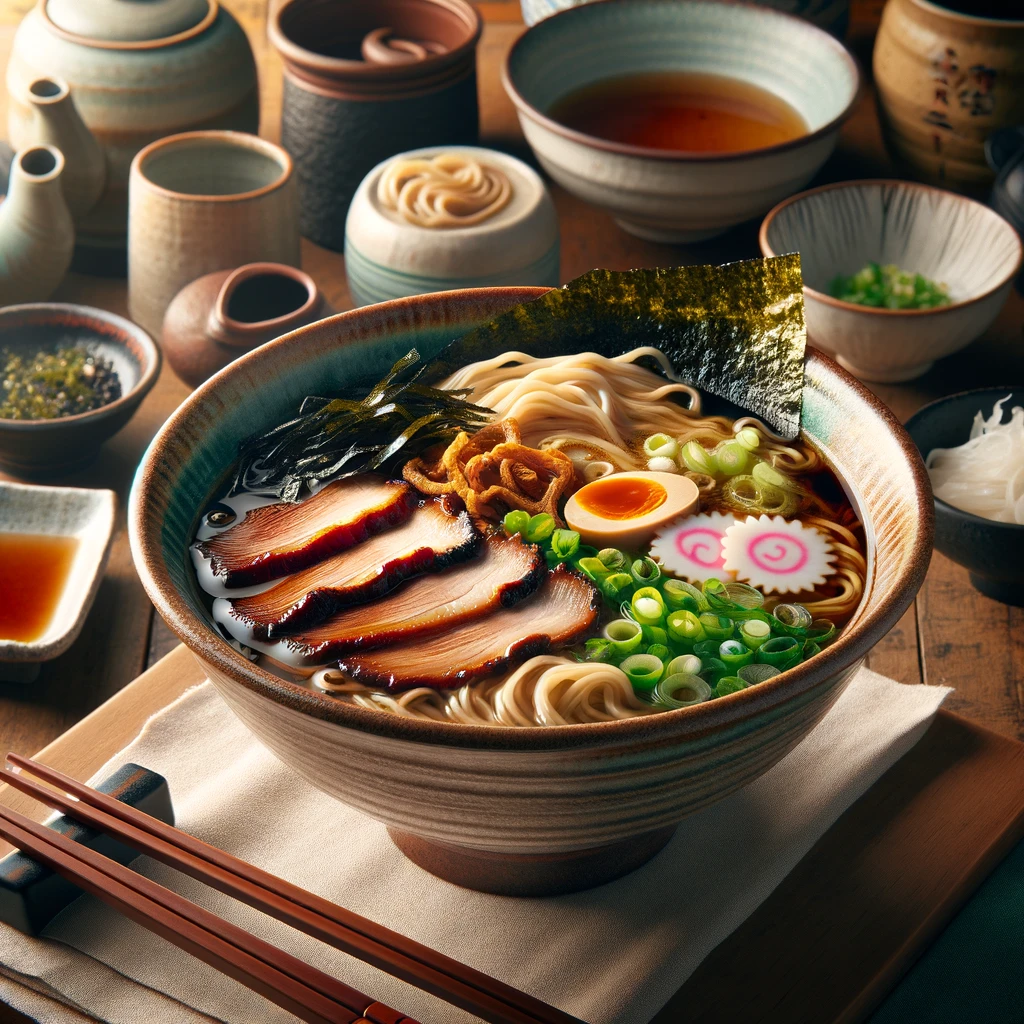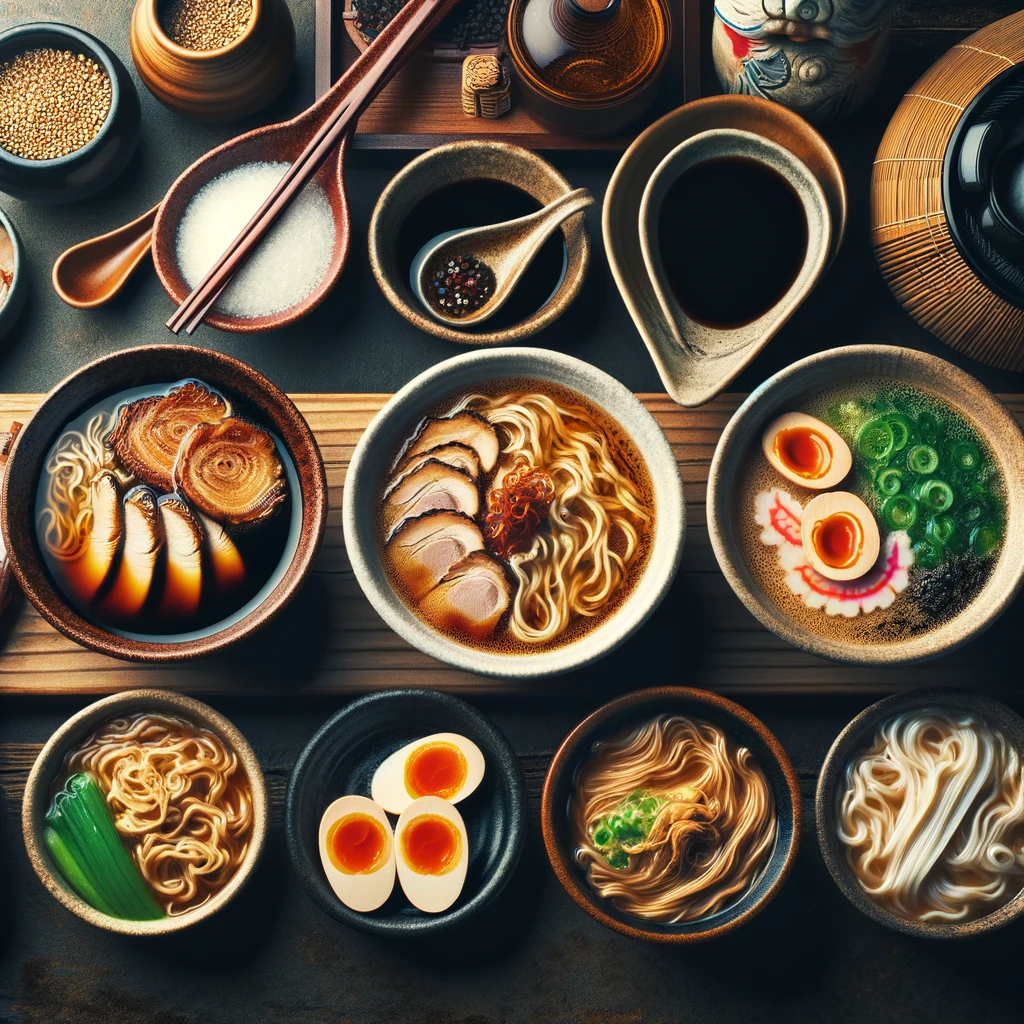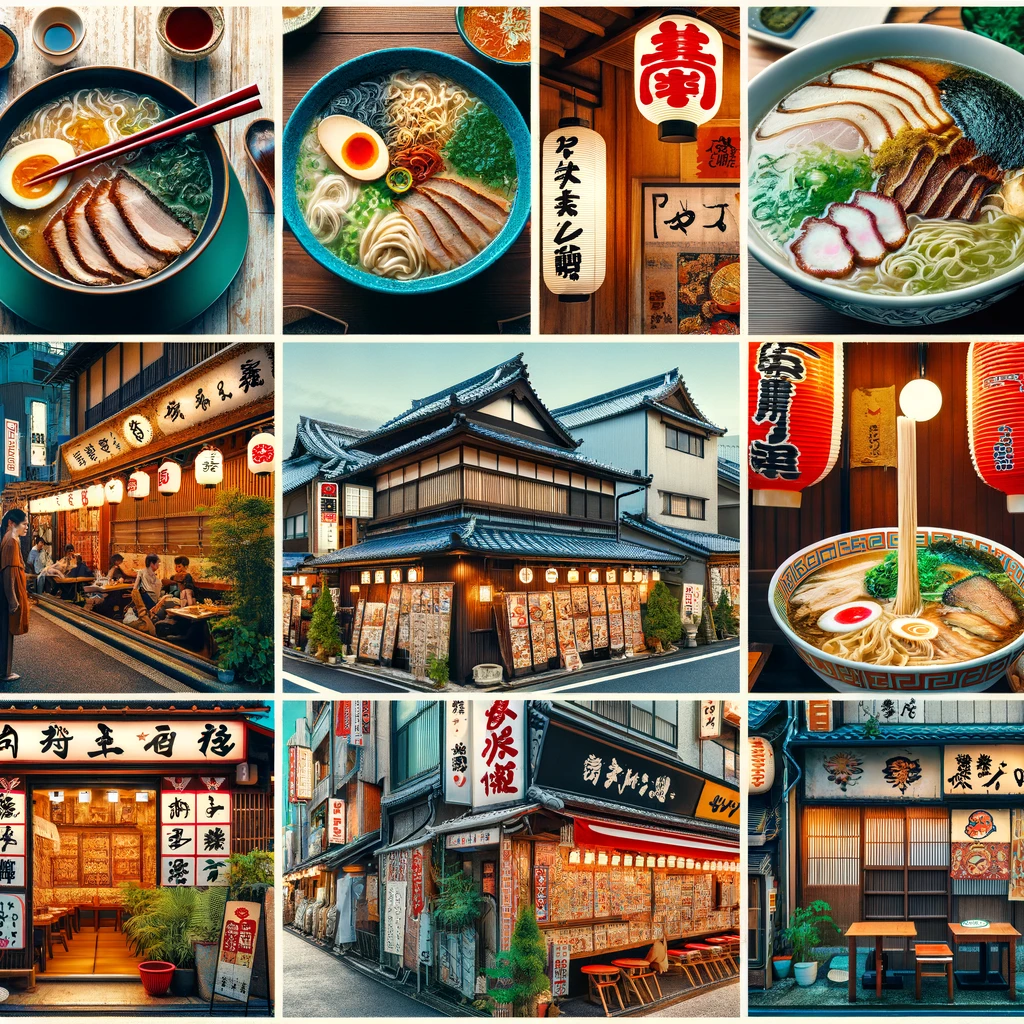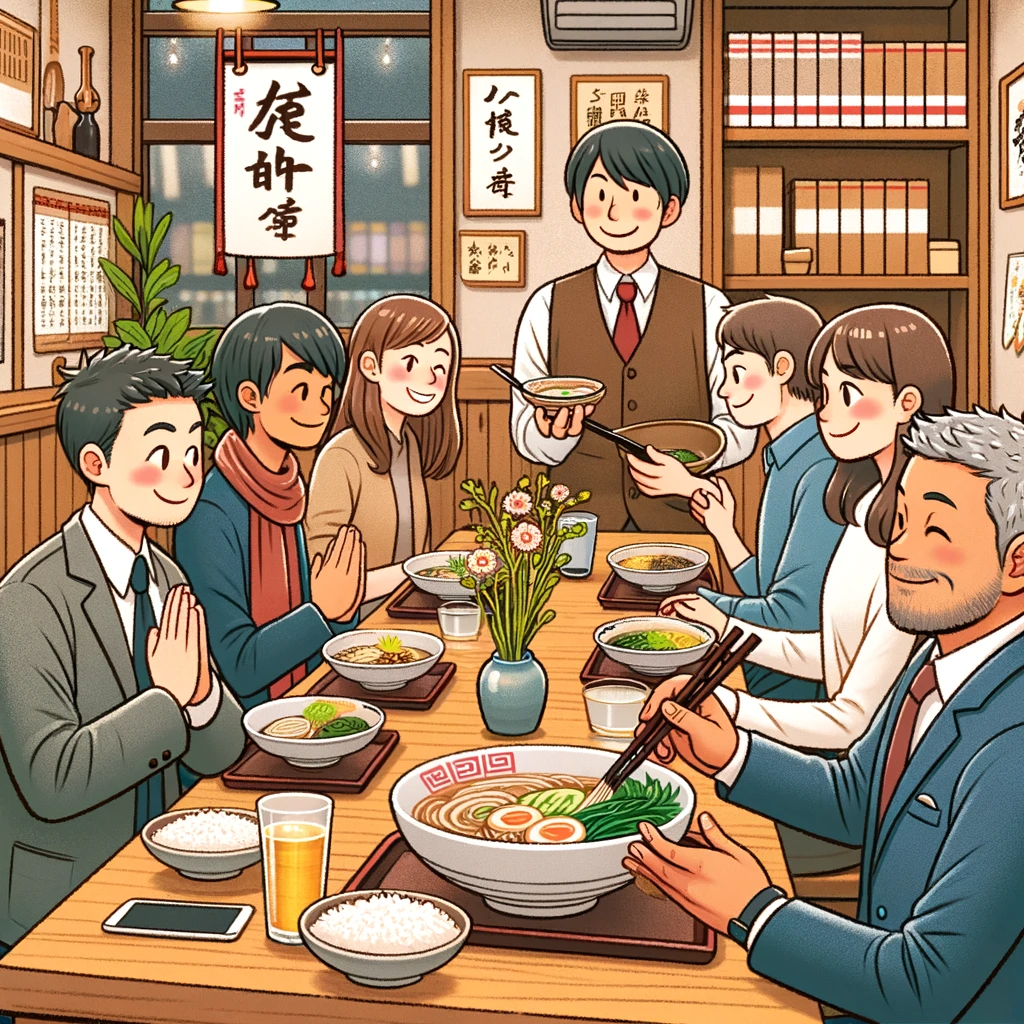Soy Sauce Ramen, a Taste of Japan’s Tradition

Soy sauce ramen, a quintessential Japanese dish, holds a rich history that dates back to the Meiji era, originating from China. Characterized by its soy sauce-based broth, complemented by animal stock such as pork bones or chicken carcasses, it typically features medium-thin, straight noodles. Common toppings include char siu, menma, green onions, and seaweed, each adding to its flavorful depth.
The allure of soy sauce ramen lies in its simplicity paired with profound flavors. The combination of the savory soy sauce and the rich umami from the animal stock captivates the taste buds, embodying a significant aspect of Japanese culinary culture.
The Diversity and Evolution of Soy Sauce Ramen

Soy sauce ramen has evolved to encompass a variety of styles, stemming from its simple components. The most common type, based on chicken stock, offers a light and universally appealing flavor. In contrast, the pork bone-based version is known for its richer and heartier taste. Regional variations, such as Toyama’s Black Ramen, further illustrate the diversity within soy sauce ramen. Over time, changes in broth composition, noodle thickness, and shape have led to an array of unique soy sauce ramen variations, each reflecting the culinary innovation of Japan.
Exploring Distinctive Ramen Shops

- Shina Soba-ya Hon-ten (Yokohama):
A symbol of traditional soy sauce ramen, this shop follows the recipes established by the late ramen maestro Minoru Sano. Its ramen offers a light yet profound flavor. More details here - Ramen Toki (Fujisawa):
Known for its delicate soy sauce ramen and high Tabelog rating, Ramen Toki offers a refined flavor experience. More details here - Ibushi Gin (Tokyo):
Famous for its unique niboshi ramen, this shop also features an automotive-themed menu. More details here - Take-chan Ramen (Tokyo):
This shop stands out for its innovative approach to niboshi ramen. More details here - Nishimachi Daiki (Toyama):
Renowned for its unique Black Ramen, this shop offers a distinctive salty broth. More details here
Visiting Guide and Recommendations

- Avoiding Peak Hours: Many popular ramen shops experience long queues during lunch and dinner times. To minimize wait times, consider visiting just after opening or before closing.
- Selecting Special Ramen: Each shop has its unique offerings. Research the menu in advance and try the shop-specific ramen and toppings.
- Ramen Shop Etiquette: In Japan, it’s common to enjoy meals quietly in ramen shops. Avoid loud conversations and be considerate of fellow diners.
- Respecting Regional Culture: Each ramen shop reflects the local culture and history. Understanding the regional context can deepen your appreciation of the ramen experience.
Conclusion: The Enduring Appeal of Soy Sauce Ramen

Through this article, we have explored the rich history, diversity, and evolution of soy sauce ramen in Japan. From traditional recipes to unique regional variations, soy sauce ramen continues to be a beloved dish nationwide. Each featured shop not only represents a facet of soy sauce ramen’s allure but also reflects the cultural and historical richness of their respective regions.
We encourage you to visit these shops and experience the depth of soy sauce ramen for yourself. Discovering the unique stories and flavors of each shop will offer you a deeper understanding of Japan’s ramen culture.
Leave a Reply